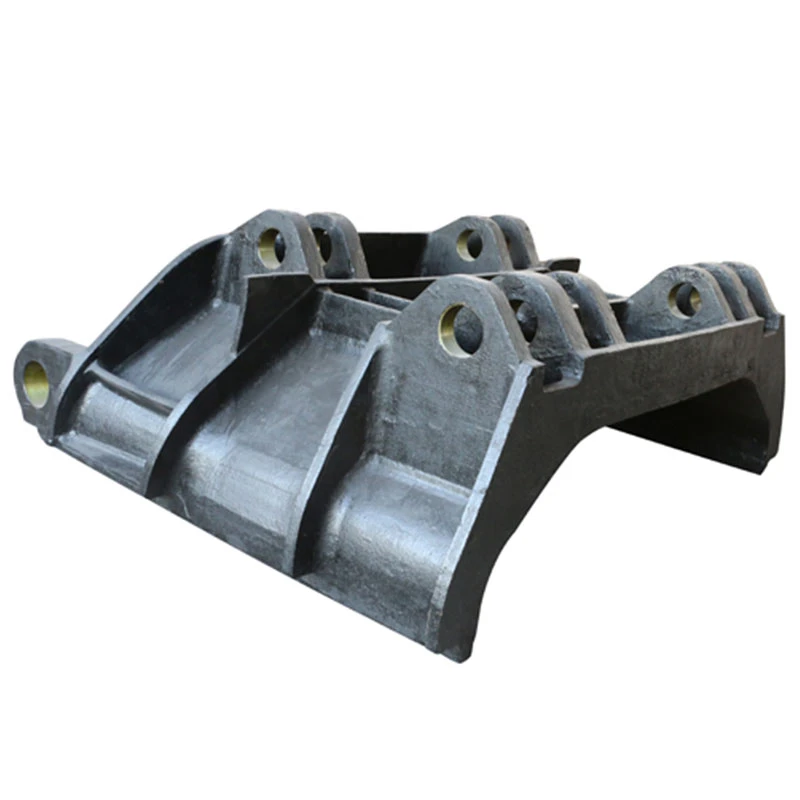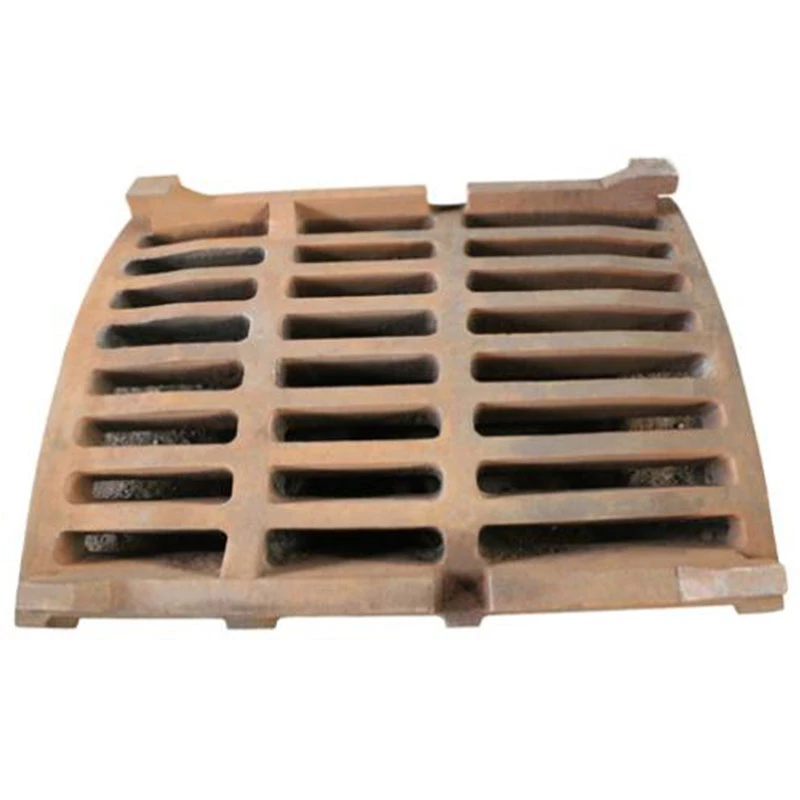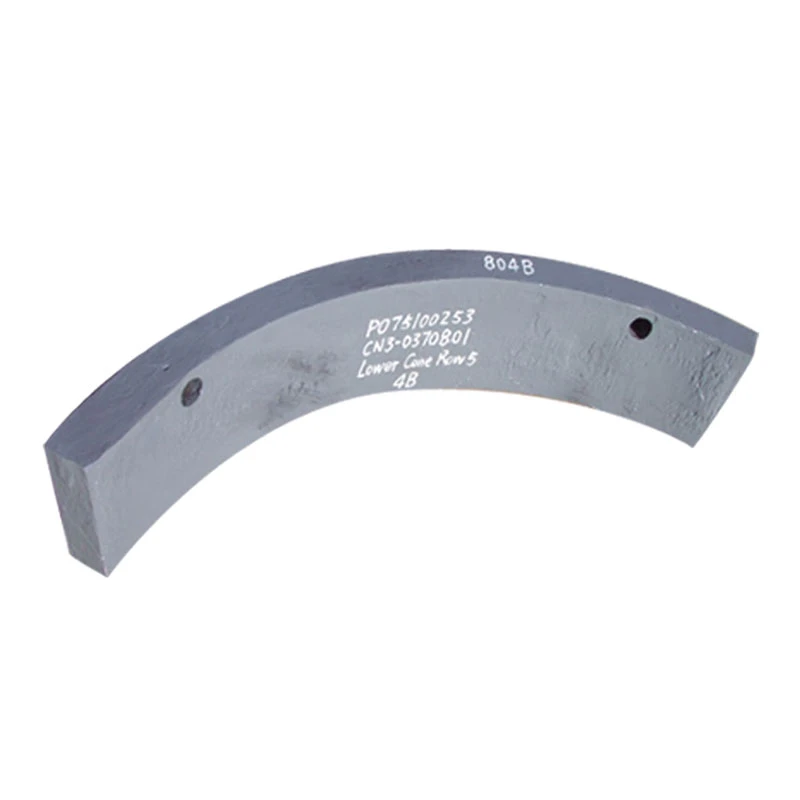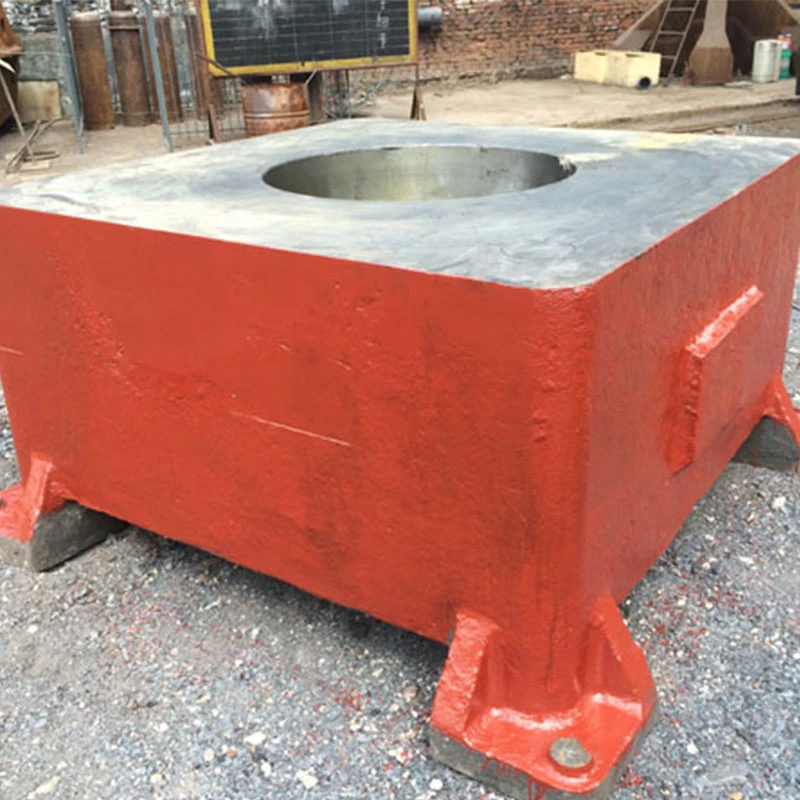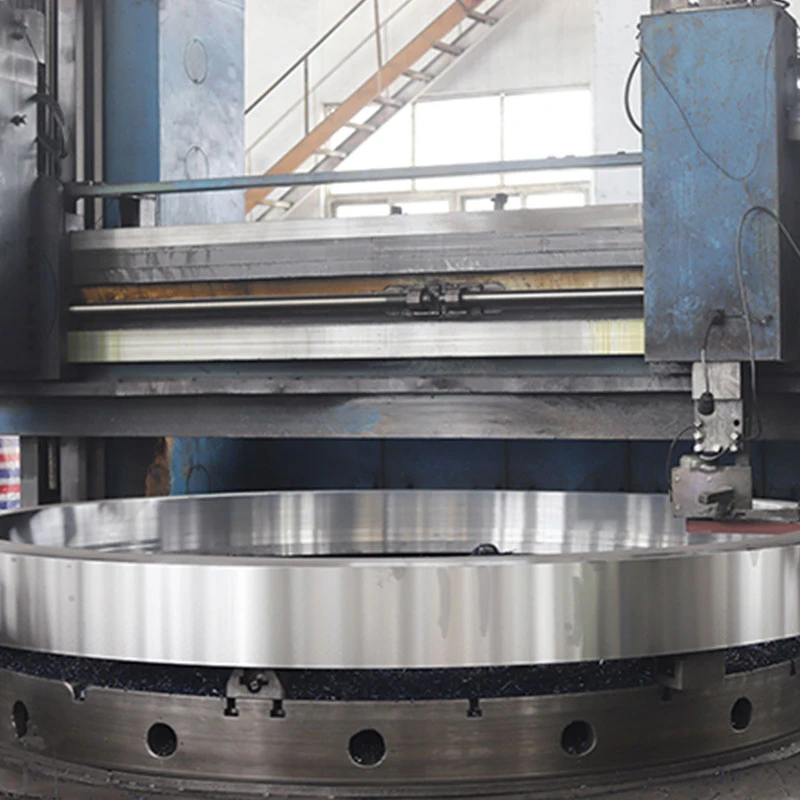- Afrikaans
- Albanian
- Amharic
- Arabic
- Armenian
- Azerbaijani
- Basque
- Bengali
- China
- China (Taiwan)
- Czech
- Danish
- Dutch
- English
- French
- German
- Greek
- Gujarati
- Haitian Creole
- hausa
- Miao
- Hungarian
- igbo
- Indonesian
- Italian
- Japanese
- Javanese
- Rwandese
- Korean
- Kyrgyz
- Lao
- Lithuanian
- Luxembourgish
- Macedonian
- Malgashi
- Malay
- Mongolian
- Myanmar
- Nepali
- Norwegian
- Persian
- Polish
- Portuguese
- Punjabi
- Russian
- Spanish
- Swahili
- Swedish
- Telugu
- Vietnamese
Aug . 02, 2025 09:20 Back to list
Advanced Bearing Chock | AI-Optimized Durability & Performance
Bearing chock is a foundational component in the operation of modern rolling mills, ensuring both work roll chock and backup roll chock assemblies maintain precision and durability. As a vital element in bearing chocks rolling mill systems, the engineering, materials, and performance of bearing chocks directly impact throughput, efficiency, and maintenance costs across metallurgy, petrochemicals, water supply, and other critical industrial sectors.
1. Industry Overview & Trends: Bearing Chock Market at a Glance
The global bearing chock market is evolving with advancements in alloy metallurgy, CNC machining tolerances, and international standardization. According to MarketsandMarkets, demand for customized rolling mill chocks is projected to exceed 1.2 million units by 2027, driven by steel and non-ferrous metal industries’ push for higher output and reliability. Over 55% of failures in rolling mills trace back to inadequate chock design, lubrication, or material fatigue (ScienceDirect). This accentuates the need for innovative, precision-engineered bearing chock solutions.
| Type | Material | Applicable Roll Diameter (mm) | Yield Strength (MPa) | Lifespan (Cycles) | Certifications | Corrosion Resistance |
|---|---|---|---|---|---|---|
| Work Roll Chock | Nodular Cast Iron | 150-600 | 520 – 630 | 1,000,000+ | ISO 9001, ASTM A536 | Excellent |
| Backup Roll Chock | High Alloy Steel (42CrMo) | 600-1500 | 900 – 1100 | 1,500,000+ | ANSI, ISO 14001 | Superior |
| Hot Rolling Mill Chock | Cast Steel + Surface Hardening | 200-1200 | 700 – 980 | >800,000 | EN 10293 | High |
| Cold Rolling Mill Chock | SG Iron + Lining | 100-650 | 500 – 630 | >1,200,000 | ISO 45001 | Excellent |
2. Engineering & Manufacturing: Bearing Chock Production Flow

- Raw Material: Certified billets of nodular cast iron, high alloy steel (e.g., 42CrMo), or SG iron, checked per ISO 9001 & EN 10293 standards.
- Manufacturing: Chocks are precision cast or forged, followed by CNC machining to achieve fine tolerances (±0.01 mm), essential for rolling mill chocks with high dynamic loads.
- Inspection: Ultrasonic, magnetic particle, and dimensional inspection ensures zero internal defects and compliance with ANSI and JIS specs.
- Finishing: Surface hardening, electrostatic powder coating, or epoxy sealing for superior anti-corrosion & extended service life (up to 1.5 million cycles in harsh conditions).
- End-use: Heavily deployed in hot/cold rolling, petrochemicals, water supply, mining, and energy industries worldwide.
3. Technical Specifications & Product Comparison
| Parameter | Bearing Chock | Average Market Chock |
|---|---|---|
| Material | QT800-2 Nodular Iron / 42CrMo Alloy Steel / Custom | Cast Iron / Mild Steel |
| Machining Tolerance | ±0.01 mm | ±0.05 mm |
| Service Life (Cycles) | 1,200,000+ | 750,000 |
| Corrosion Resistance | High (Epoxy-coated/Surface-hardened) | Medium (Standard Paint) |
| Testing Standards | ISO 9001, ASTM, EN 10293, ANSI | In-house or variable |
| Operating Temperature | -30°C – 250°C | 0°C – 180°C |
| Certifications | ISO 14001, OHSAS 18001 | Limited/Optional |
| Energy Efficiency | Best-in-class (Up to 14% lower friction loss) | Standard |
4. Application Scenarios & Performance Advantages
- Metallurgical Plants: Bearing chock assemblies for tandem rolling mills accommodate dynamic axial/radial loads up to 2500 kN, ensuring precise roll positioning in 24/7 hot strip and plate production.
- Petrochemical Industry: Engineered chocks with enhanced corrosion resistance extend maintenance intervals in acid-gas environments.
- Water Supply & Hydro: Custom bearing chock designed for oversized pump shafts or turbines, operating reliably for 15+ years in humid, abrasive settings.
- Non-ferrous & Specialty Mills: Lightweight chock options reduce overall power consumption, improving sustainability metrics.
Client installed customized surface-hardened bearing chock (SG Iron, CNC finish) for 980 mm backup roll. Achieved: 38% reduction in chock-related downtime, NDT-certified for 1.25 million cycles, and 12% power savings (per data validated by SGS-inspection).
5. Manufacturer Comparison: Selecting the Best Bearing Chock
| Manufacturer | Country | Core Material(s) | Typical Delivery Time | Certifications | Key Clients |
|---|---|---|---|---|---|
| MiningZY | China | QT800-2 Iron, 42CrMo Steel | 35-45 days (custom) | ISO 9001/14001, SGS, EN 10293 | Baosteel, ArcelorMittal, VIOLEX |
| SARCLAD | UK | Alloy Steel | 60 days | ISO certified | Tata Steel, Gerdau |
| TSUBAKIMOTO CHAIN | Japan | Engineered Iron Steel | 50 days | JIS, ISO | NSSMC, Kobe Steel |
| WHEMCO | USA | Cast Steel | 55 days | ASTM, ISO | US Steel, Nucor |
6. Custom Bearing Chock Engineering: Performance Tailored to Application
Customization truly unlocks the potential of bearing chock performance for every rolling mill. Parameters tailored include:
- Material Grade: Select from high nodular iron, low alloy, or 42CrMo, balancing toughness and machinability.
- Load Rating: Engineered for customer-specific load spectra (static/dynamic loads up to 3500 kN).
- Lubrication: Provision for high-efficiency central/manual grease/oil labyrinth seals, reducing environmental ingress and shaft wear.
- Precision: CNC finish, optional hard chrome lining, and bearing seats aligned to within 8mircon runout (ISO 286-2)
- Corrosion Protection: Epoxy/polyurethane coating for environments with high humidity/corrosives.
- Integration: Sensors for temperature & vibration monitoring can be embedded for predictive maintenance, boosting operational uptime.
Bearing chock made from 42CrMo (SG-iron liner), optimized for 1.7m shaft diameter. Passed ANSI fatigue and corrosion tests; operational in >98% humidity, designed for 20-year+ service with minimal maintenance.
7. Product Assurance & Service Experience
- Quality Certification: All bearing chock products are certified to ISO 9001 and EN 10293, with batch traceability and full QA reports.
- Warranty: Standard 2-year post-installation; extended up to 5 years for specific projects.
- Support & Retrofit: 24/7 online technical support; field engineers available for installation and troubleshooting worldwide.
- Lead Time: Standard production 35 days (customization may extend depending on design verifications and test schedule).
- Packaging & Logistics: Export-ready (seaworthy) crates, moisture-proof protection, GPS shipment tracking.
8. FAQ: Bearing Chock Professional FAQ
-
Q1: What is the optimal material for a heavy-duty bearing chock?A1: For high-load rolling mill applications, 42CrMo high alloy steel or QT800-2 nodular cast iron strikes the best balance between yield strength, toughness, and machinability. Surface hardening and epoxy or EN plating boost corrosion protection.
-
Q2: What standards are used for dimension tolerance and quality?A2: Bearing chock manufacturing typically complies with ISO 9001 (quality), ANSI (industrial tolerances), EN 10293 (castings), and in some cases ISO 286-2 for fits and geometric accuracy.
-
Q3: How does chock geometry impact bearing life?A3: Accurate chock geometry ensures ideal roll alignment, proper stress distribution, and lubrication flow. Deviations can lead to bearing edge loading or fatigue cracks, reducing service life by over 30%.
-
Q4: What are common anti-corrosion techniques for bearing chock?A4: Techniques include shot blasting + three-layer epoxy painting, electrostatic powder coating, zinc aluminium-rich primers, and local hard chrome lining. All methods aim to maintain less than 2mg/cm2/yr corrosion rates in C3-C5 industrial atmospheres (ISO 12944).
-
Q5: Can bearing chock be adapted for sensor/monitor integration?A5: Yes, modern chocks are frequently designed with integrated temperature and vibration sensors, enabling predictive maintenance and real-time monitoring, which helps maximize equipment uptime and reduce unplanned downtimes.
-
Q6: What installation standards should be followed?A6: Adhere to manufacturer recommendations plus referenced standards such as ISO 14120 (guarding), correct use of high-torque fasteners, NDT checks for cracks, and follow specified grease/lubrication intervals for optimal service.
-
Q7: How to select a bearing chock for corrosive or high-humidity operations?A7: Prioritize high-alloy steel or SG iron substrates, ensure enhanced coating systems, and opt for double-labyrinth seals or stainless accessories. Confirm tested compliance to ISO 9227 (salt spray).
9. Why Choose Us: Expertise, Partnerships, and Industry Recognition
- 30+ years manufacturing bearing chock, with over 2,000 sets delivered annually worldwide.
- Partners of leading steel and engineering conglomerates: Baosteel, ArcelorMittal, Tata Steel, and more.
- Authorized supplier in major ISO and ASTM projects, with end-to-end QA and traceable documentation.
- Peer-reviewed case studies featured in ResearchGate and global engineering forums.
[1] MarketsandMarkets: Bearings Market, 2023-2027
[2] ScienceDirect: Root Cause Study on Rolling Mill Chock Failures
[3] ResearchGate: Analysis of Roll Chock Failures in Metal Rolling Mills
[4] ISO Official: ISO 10293:2017 Steel Castings
[5] SteelGuru Forum: Rolling Mill Bearings and Chock Selection
-
Low-Cost Borehole Drilling Machine for Small-Scale Projects
NewsJul.11,2025
-
Carbide Bullet Teeth for Abrasive Formations: Powering Industrial Drilling Efficiency
NewsJul.11,2025
-
Advantages of Down-the-Hole Drill Bits in Geothermal Projects
NewsJul.11,2025
-
Hole Hammer Use in Water Well Drilling
NewsJul.11,2025
-
Benefits of a Mobile Diesel Compressor in Construction
NewsJul.11,2025
-
Benefits of Diesel Portable Screw Air Compressors
NewsJul.11,2025




